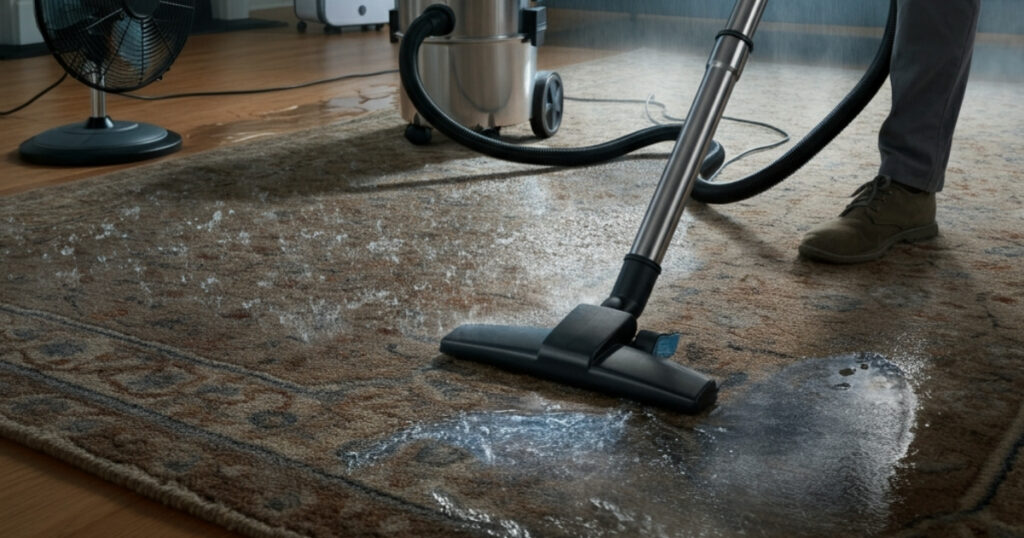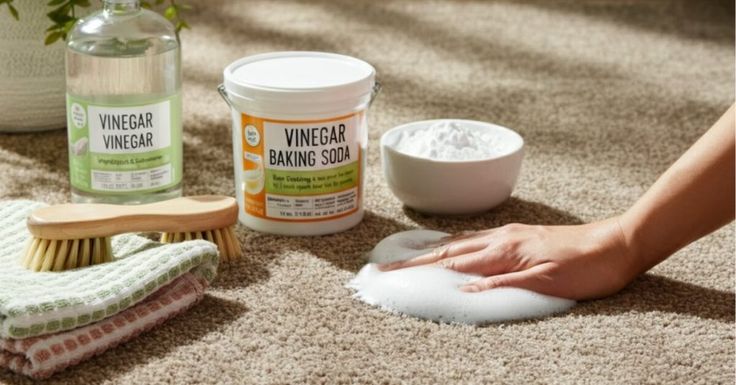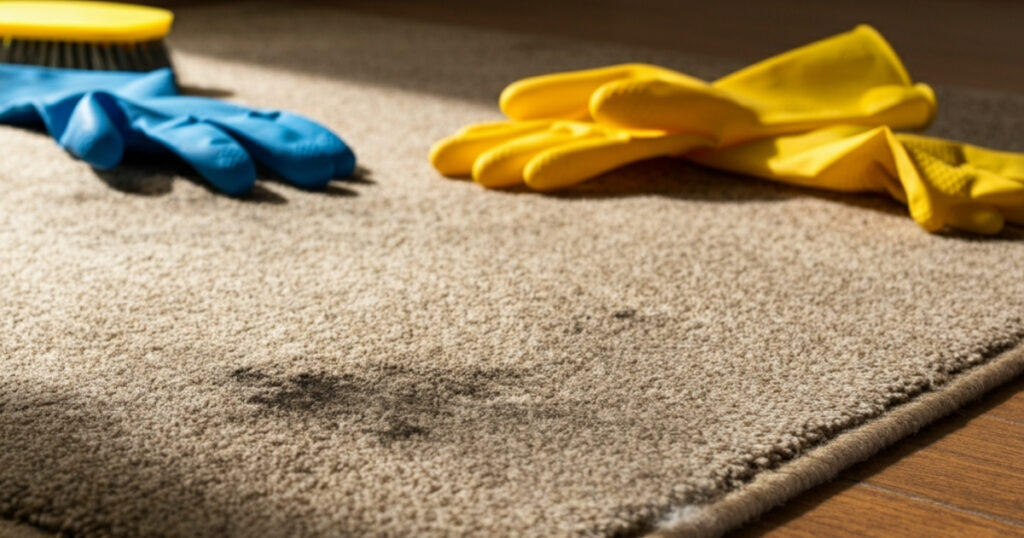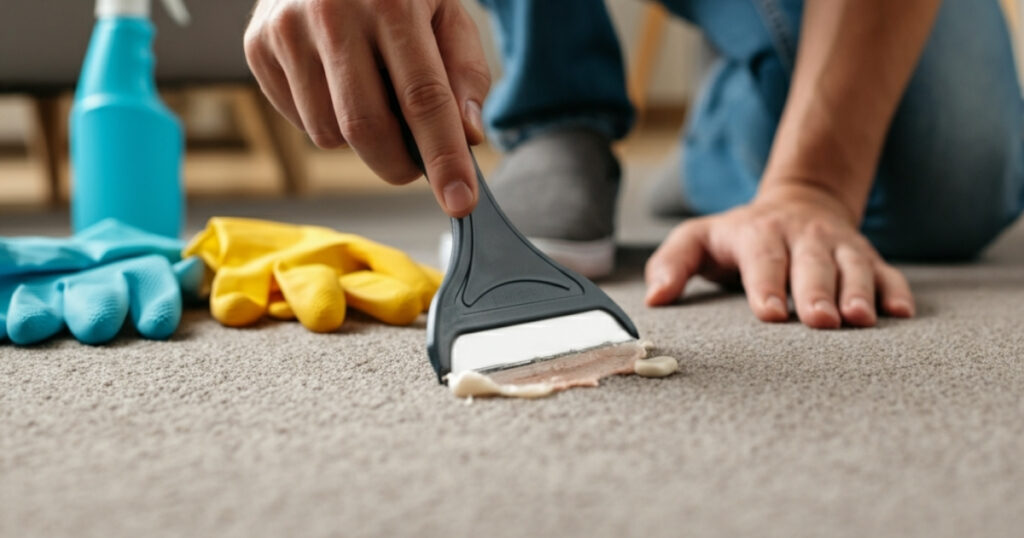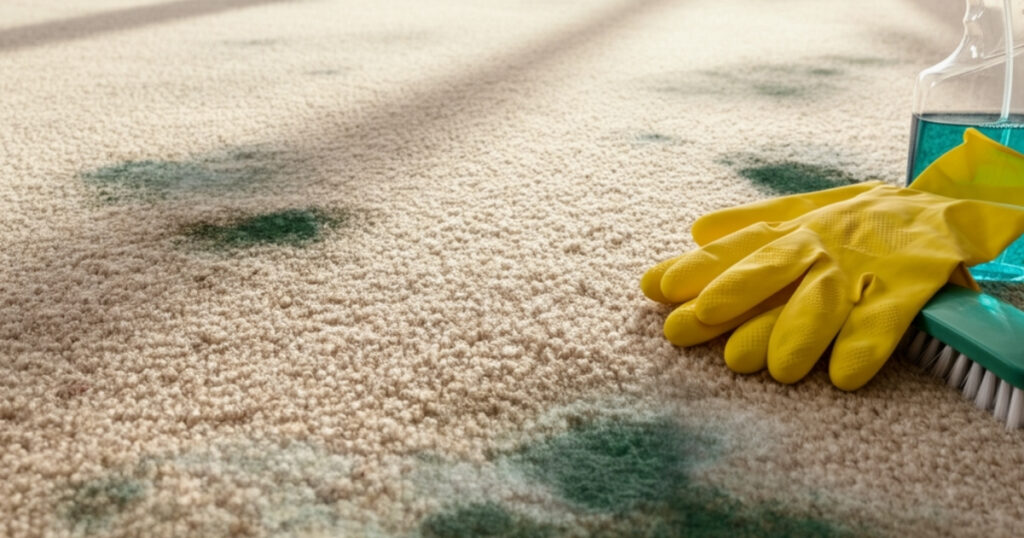As an Amazon Associate, I earn from qualifying purchases.
Water damage can strike at any moment. Whether it’s from a burst pipe, flooding, or a simple spill that got out of hand, knowing how to dry wet carpet quickly can save you hundreds of dollars in replacement costs and prevent serious health hazards like mold growth.
The key to successful carpet drying lies in acting fast and using the right techniques. When carpet stays wet for more than 24-48 hours, it becomes a breeding ground for bacteria and mold, which can damage your home and pose health risks. However, with the proper approach, most wet carpets can be restored to their original condition.
This guide will walk you through everything you need to know about drying wet carpet effectively. From immediate damage control to professional-grade techniques, you’ll learn practical steps that can save your flooring and protect your home’s indoor air quality.
Contents Overview
Immediate Steps to Take When Your Carpet Gets Wet
Time is critical when dealing with wet carpet. The faster you act, the better your chances of preventing permanent damage and mold growth. Here’s what you should do in the first few hours after discovering wet carpet.
First, identify and stop the water source. Whether it’s a leaky pipe, overflowing appliance, or external flooding, you need to eliminate the cause before focusing on cleanup. Turn off the main water supply if necessary and contact a plumber for pipe-related issues.
Next, ensure your safety by turning off electricity to the affected area. Water and electricity don’t mix, so switch off power at the circuit breaker before stepping on wet carpet. This prevents electrocution and protects your electrical systems from damage.
Remove as much standing water as possible using towels, mops, or a wet/dry vacuum. The sooner you extract excess water, the less time it has to penetrate deeper into carpet fibers and padding. Work systematically from the edges toward the center to prevent water from spreading to dry areas.
Assessment: When to DIY vs Call Professionals
Not all wet carpet situations require professional intervention, but some definitely do. Understanding when you can handle the job yourself versus when to call experts can save you time, money, and potential health risks.
You can typically handle DIY carpet drying when the affected area is small (less than 10 square feet), the water is clean (not from sewage or flooding), and you can act within the first 24 hours. Minor spills, small leaks, or localized water incidents often fall into this category.
However, professional help becomes necessary when dealing with extensive water damage covering large areas, contaminated water from sewage backups or flooding, or situations where water has been sitting for more than 48 hours. Additionally, if you notice any signs of mold growth or if the carpet padding is severely saturated, professionals have the specialized equipment and expertise to handle these complex scenarios safely.
Professional water damage restoration companies use industrial-grade equipment like truck-mounted extractors, commercial dehumidifiers, and air movers that can remove moisture far more effectively than household tools. They also have moisture meters to accurately assess water penetration levels and ensure complete drying.
Essential Tools and Materials for Carpet Drying
Having the right equipment makes the difference between successful carpet restoration and costly replacement. While you don’t need every professional tool, certain items are essential for effective wet carpet drying.
Start with a wet/dry shop vacuum, which is your most important tool for water extraction. These powerful vacuums can remove both standing water and moisture trapped in carpet fibers. Choose one with at least a 5-gallon capacity for better efficiency.
Fans are crucial for air circulation and moisture evaporation. Box fans, ceiling fans, or portable air movers help speed up the drying process by moving air across the carpet surface. The more air movement you can create, the faster moisture will evaporate.
A dehumidifier removes excess moisture from the air, preventing it from being reabsorbed by the carpet. This is particularly important in humid climates or during wet seasons when natural air drying is less effective.
Other helpful supplies include absorbent towels, plastic sheeting to protect furniture, extension cords for equipment placement, and disinfectant solutions for cleaning once the carpet is dry.
Step-by-Step Process to Dry Wet Carpet
Successfully drying wet carpet requires a systematic approach that addresses both visible moisture and hidden dampness in padding and subfloors. Follow these detailed steps to maximize your chances of complete restoration.
Remove Furniture and Belongings
Clear the affected area completely. Remove all furniture, decorations, and personal items from the wet carpet. This prevents further water absorption by furniture legs and allows for complete access to the damaged area. Place furniture on blocks or move it to a dry room to prevent staining and additional water damage.
Extract Standing Water
Use your wet/dry vacuum to remove as much water as possible. Work in overlapping passes, moving slowly to allow the vacuum time to extract moisture. Empty the tank frequently to maintain suction power. For heavily saturated areas, you may need to make multiple passes over the same spots.
Remove Carpet Padding if Necessary
Severely wet carpet padding rarely dries completely and often becomes a source of mold and odors. If the padding is soaked through, carefully pull back the carpet and remove the damaged padding. Cut it into manageable sections for disposal. The carpet can often be saved even when the padding needs replacement.
Set Up Air Circulation
Position fans strategically around the room to create maximum airflow across the carpet surface. Place fans at different heights and angles to ensure air movement reaches all areas. Open windows and doors if weather permits to increase ventilation and help moisture escape.
Run Dehumidifiers
Place dehumidifiers in the affected room and run them continuously. Empty water reservoirs regularly and monitor humidity levels. Aim to reduce indoor humidity to 30-50% to prevent mold growth and speed drying.
Monitor Progress Daily
Check the carpet’s moisture level daily by pressing firmly with your hand or using a moisture meter if available. Properly dried carpet should feel completely dry to the touch with no spongy sensation. The process typically takes 2-5 days depending on conditions.
Advanced Techniques for Stubborn Moisture
Some situations require more aggressive drying techniques, especially when dealing with thick carpets, dense padding, or high humidity conditions. These advanced methods can help tackle persistent moisture problems.
Heat can accelerate the drying process significantly. Use space heaters (safely positioned away from wet areas) or increase your home’s temperature to 80-85°F. Higher temperatures increase evaporation rates and help moisture escape more quickly. However, avoid excessive heat that could damage carpet fibers.
Professional-grade air movers provide more powerful airflow than household fans. If you can rent or borrow these units, they’re worth the investment for large or stubborn drying jobs. Position them to create a circular airflow pattern that continuously moves moist air away from the carpet.
For carpets with waterproof backing or in rooms with poor ventilation, consider using a technique called “floating” the carpet. This involves pulling the carpet away from the tack strips and lifting it slightly to allow air circulation underneath. This method is particularly effective when the subfloor is also wet.
Preventing Mold and Mildew Growth
Mold prevention should be your top priority throughout the carpet drying process. Mold can begin growing within 24-48 hours in ideal conditions, making quick action essential for preventing long-term health and property damage.
Maintain proper temperature and humidity levels during the drying process. Keep indoor temperatures between 70-80°F and humidity below 50%. These conditions discourage mold growth while promoting faster drying. Use your HVAC system, dehumidifiers, and fans working together to achieve these levels.
Consider applying antimicrobial treatments once the initial water extraction is complete. Many commercial carpet cleaning products contain mold inhibitors that can provide additional protection during the drying period. Apply according to manufacturer instructions and ensure proper ventilation.
Watch for early warning signs of mold development, including musty odors, discoloration, or visible growth on carpet surfaces. If you notice any of these signs, increase your drying efforts immediately or consider professional treatment.
Cleaning and Sanitizing After Drying
Once your carpet is completely dry, thorough cleaning and sanitizing are essential to restore hygiene and eliminate any remaining contaminants. This step is particularly important if the water was contaminated or if the carpet remained wet for an extended period.
Start with a thorough vacuuming to remove any debris, dirt, or particles that may have settled during the drying process. Use a clean vacuum bag or empty bagless containers before beginning to ensure maximum suction and prevent redistributing contaminants.
Apply an appropriate carpet cleaning solution based on the type of water damage. For clean water incidents, a standard carpet shampoo or steam cleaning may suffice. For contaminated water situations, use a disinfectant specifically designed for carpets and follow label instructions carefully.
Consider professional steam cleaning for the best results, especially after significant water damage. Professional equipment can extract deeply embedded moisture and contaminants that household tools might miss. This investment often pays off in extended carpet life and improved indoor air quality.
When to Replace Rather Than Dry
Despite your best efforts, some wet carpet situations require replacement rather than restoration. Recognizing these scenarios early can save time, effort, and potential health risks from attempting to salvage unsalvageable materials.
Replace carpet that has been contaminated with sewage, chemicals, or flood water containing dangerous bacteria. No amount of cleaning can safely restore carpet exposed to these hazardous conditions. The health risks simply aren’t worth the cost savings of attempting restoration.
Carpet that has remained wet for more than 72 hours typically requires replacement due to mold and bacteria growth. Even if you can’t see visible mold, microscopic growth may have already begun, creating ongoing health concerns and odor problems.
Age and quality also factor into replacement decisions. Older carpets or those of lower quality may not withstand the drying process well, developing permanent stains, shrinkage, or texture changes that make restoration impractical.
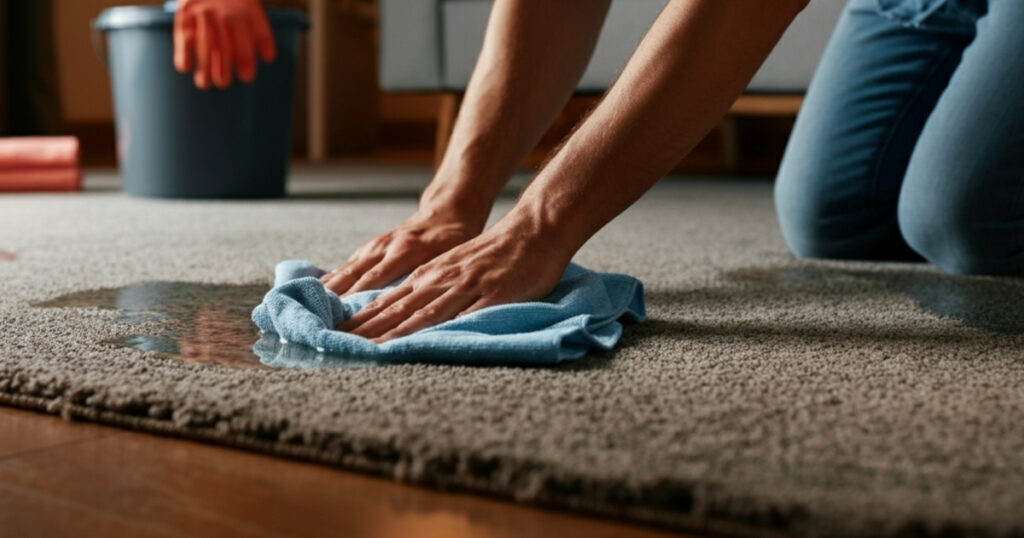
Frequently Asked Questions
How long does it take to dry wet carpet?
Most wet carpets take 12-48 hours to dry completely with proper equipment and conditions. Factors like carpet thickness, padding type, humidity levels, and air circulation affect drying time.
Can I walk on wet carpet while it’s drying?
Minimize foot traffic on wet carpet as much as possible. Walking on wet carpet can push moisture deeper into fibers and padding, extending drying time and potentially causing permanent damage.
Will my carpet smell after it dries?
Properly dried carpet should not have any lingering odors. Persistent smells usually indicate incomplete drying, mold growth, or contamination that requires professional treatment.
Should I use heat to speed up carpet drying?
Yes, moderate heat (80-85°F) can help accelerate drying. However, avoid excessive heat sources like hair dryers or heat lamps that could damage carpet fibers or create fire hazards.
Can I dry carpet padding, or does it need replacement?
Thin foam padding may dry successfully, but thick padding or padding that’s been saturated for more than 24 hours typically requires replacement to prevent mold and odor issues.
Is it safe to use bleach on wet carpet?
No, bleach can damage carpet fibers and may not be effective against all types of mold and bacteria. Use carpet-specific disinfectants designed for your carpet type instead.
Protecting Your Investment and Health
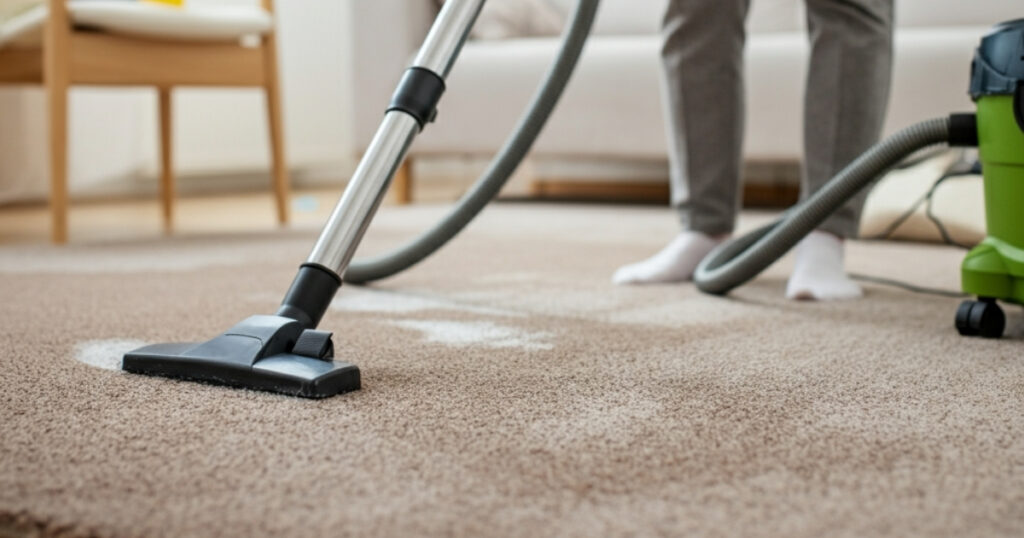
Learning how to dry wet carpet effectively protects both your financial investment and your family’s health. Quick action, proper techniques, and the right equipment can often restore water-damaged carpet to its original condition while preventing costly mold remediation down the road.
Remember that successful carpet drying depends on speed, thorough moisture removal, and creating optimal drying conditions. When in doubt, especially with extensive damage or contaminated water, consulting with water damage restoration professionals can save time, money, and ensure safe results.
Keep this guide handy for future reference, and consider assembling a basic water damage response kit with essential tools before you need them. Being prepared can make the difference between minor inconvenience and major home damage when water emergencies strike.
As an Amazon Associate, I earn from qualifying purchases.

